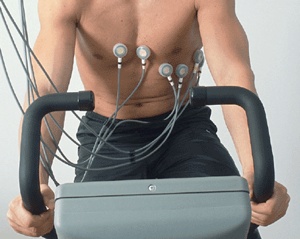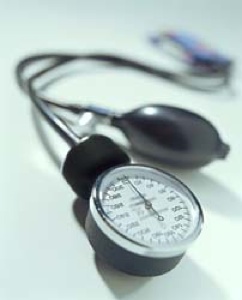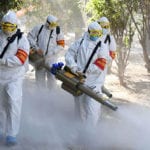 Weird Stuff
Weird Stuff  Weird Stuff
Weird Stuff  Animals
Animals 10 Inspiring Tales of Horses Being Human
 Mysteries
Mysteries Top 10 Haunting Facts About the Ghost Ship MV Alta
 History
History 10 Surprising Stories About the Texas Rangers
 Humans
Humans 10 Philosophers Who Were Driven Mad by Their Own Theories
 Miscellaneous
Miscellaneous 10 Video-Game-Worthy Weapons and Armors from History
 Weird Stuff
Weird Stuff 10 Psychics Who Accurately Predicted Wartime Events
 The Arts
The Arts 10 Pieces of Art Inspired by a Broken Heart
 Health
Health 10 Science Fiction-Sounding New Medical Treatments
 History
History 10 Surprising Facts About the Father of Submarine Warfare
 Weird Stuff
Weird Stuff 10 Times Real Laws Were Based on Bizarre Hypotheticals
 Animals
Animals 10 Inspiring Tales of Horses Being Human
 Mysteries
Mysteries Top 10 Haunting Facts About the Ghost Ship MV Alta
Who's Behind Listverse?

Jamie Frater
Head Editor
Jamie founded Listverse due to an insatiable desire to share fascinating, obscure, and bizarre facts. He has been a guest speaker on numerous national radio and television stations and is a five time published author.
More About Us History
History 10 Surprising Stories About the Texas Rangers
 Humans
Humans 10 Philosophers Who Were Driven Mad by Their Own Theories
 Miscellaneous
Miscellaneous 10 Video-Game-Worthy Weapons and Armors from History
 Weird Stuff
Weird Stuff 10 Psychics Who Accurately Predicted Wartime Events
 The Arts
The Arts 10 Pieces of Art Inspired by a Broken Heart
 Health
Health 10 Science Fiction-Sounding New Medical Treatments
 History
History 10 Surprising Facts About the Father of Submarine Warfare
Top 10 Medical Tests you Need
Most people visit the doctor when they fall ill, but it can also be an excellent idea to use him as an insurance policy – get a check up before you get sick in case you can head off any future problems. With that in mind, Forbes came up with a list of ten medical tests that you should definitely ask for when you next visit the doctor. You don’t have to have them all done at the same time, but they are all well worth considering.
10. Blood pressure screening
Though not a fancy diagnostic test, monitoring blood pressure is crucial for vascular health, as elevated blood pressure is a risk factor for heart disease and stroke. At the doctor’s office, many patients get nervous, which typically causes blood pressure to rise. That’s why relying on your physician’s reading alone may not be ideal. At-home blood pressure machines are widely available and are especially helpful for those trying to monitor the effects of a blood pressure medication like a beta-blocker. Reducing the amount of salt in your diet can help lower blood pressure.
9. C-reactive protein test
This test, for a blood marker called C-reactive protein, measures the amount of inflammation in the body. Though not specific to the heart, it has been considered helpful in diagnosing and monitoring cardiovascular problems, since arterial inflammation is believed to be involved in heart attacks and strokes. The simple blood test is used as an adjunct to more traditional measures of risk, such as high cholesterol and high blood pressure.
8. Colonoscopy
Screening, even for individuals without risk factors, for colorectal cancer should be begin at age 50. According to the American Cancer Society, an estimated 104,950 colon and 40,340 rectal cancer cases are expected to occur in 2005, making colorectal cancer the third most common cancer in both men and women. During the test, a long, thin, flexible tube with a scope attached to it is guided through the colon. For obvious reasons, virtual colonoscopies–a less invasive technique that uses computed tomography scans to create computer-generated images of the colon–are widely considered much more comfortable from the patient’s perspective; but some studies have shown that virtual colonoscopies miss more polyps than the traditional variety.
7. CYP450 test
Enzymes that encode CYP450 genes–or genes found primarily in the liver, where we metabolize drugs and other foreign substances that enter the body–impact the ability of prescription drugs to penetrate the bloodstream properly. That means that the efficacy of a drug depends upon the availability of these enzymes. The CYP450 test, developed by Indianapolis, Ind.-based Roche Diagnostics, measures the enzyme levels so that doctors can find the right dosage for your body and see if you have immunity to a particular drug. Recently cleared by the Food and Drug Administration, this test is somewhat pricey, ringing in at about $500 US.
6. Diabetes risk tests
Routine screening of all people starting at the age of 45 is highly recommended, using one of two simple, inexpensive tests that can detect early stages of type II diabetes: the fasting plasma glucose test or the oral glucose tolerance test. The blood glucose levels measured after these tests indicate whether you have a normal metabolism, prediabetes or diabetes. If you are more than 20% above healthy body weight, you have even more of a reason to get this test, since obesity is a risk factor for diabetes.
5. Lipid profile
Knowing your cholesterol level is crucial for both detecting and managing problems with your overall vascular health, but there’s more to cholesterol than just the “bad” low-density lipoprotein and the “good” high-density lipoprotein. There are less-traditional blood markers such as lipoprotein particle size and apolipoprotein that also have been shown to detect risk. The VAP cholesterol test, a 19-metric cholesterol scan developed by the Birmingham, Alabama-based lab Atherotech, is covered by most insurance companies as a routine cholesterol screening, which makes it an affordable choice.
4. Pap smear
Changes in the cell of the cervix can show cervical cancer or possibly conditions that might develop into cancer. Experts recommend that all women who have been sexually active or who are over age 21 get an annual Pap smear–a simple test used to detect precancerous conditions that could lead to cervical cancer.
3. Prostate-specific antigen screening
Prostate-specific antigen is a substance released into a man’s blood by his prostate gland. The amount of antigen in the blood typically increases with age–but it also can be increased sharply by prostate cancer. The test is done by a simple blood sample drawn from a vein, most typically from the arm. Given the high rate of false-negative and false-positive results–and the costs and risks of further testing–there is a lot of disagreement among experts about this test. Still, an annual PSA test for men over age 50 is recommended.
2. Skin cancer exam
The best way to detect the early warning signs of basal cell carcinoma, squamous cell carcinoma and malignant melanoma (the three main types of skin cancer) is to get a yearly skin exam by a dermatologist. Often, the first sign of melanoma is a change in the shape, color or size of an existing mole. Asymmetry of a mole is also something to watch out for, as it can sometimes indicate the presence of skin cancer.
1. Stress test
Designed to determine if there is adequate blood flow to your heart during increased levels of activity, this test is ideal for people who might be at risk for heart disease, especially those over 50. It typically involves walking or jogging on a treadmill or pedaling a stationary bike, while your electrocardiogram, heart rate and blood pressure are all monitored. Physicians use this test to help determine the likelihood of coronary artery disease.
Source: Forbes











